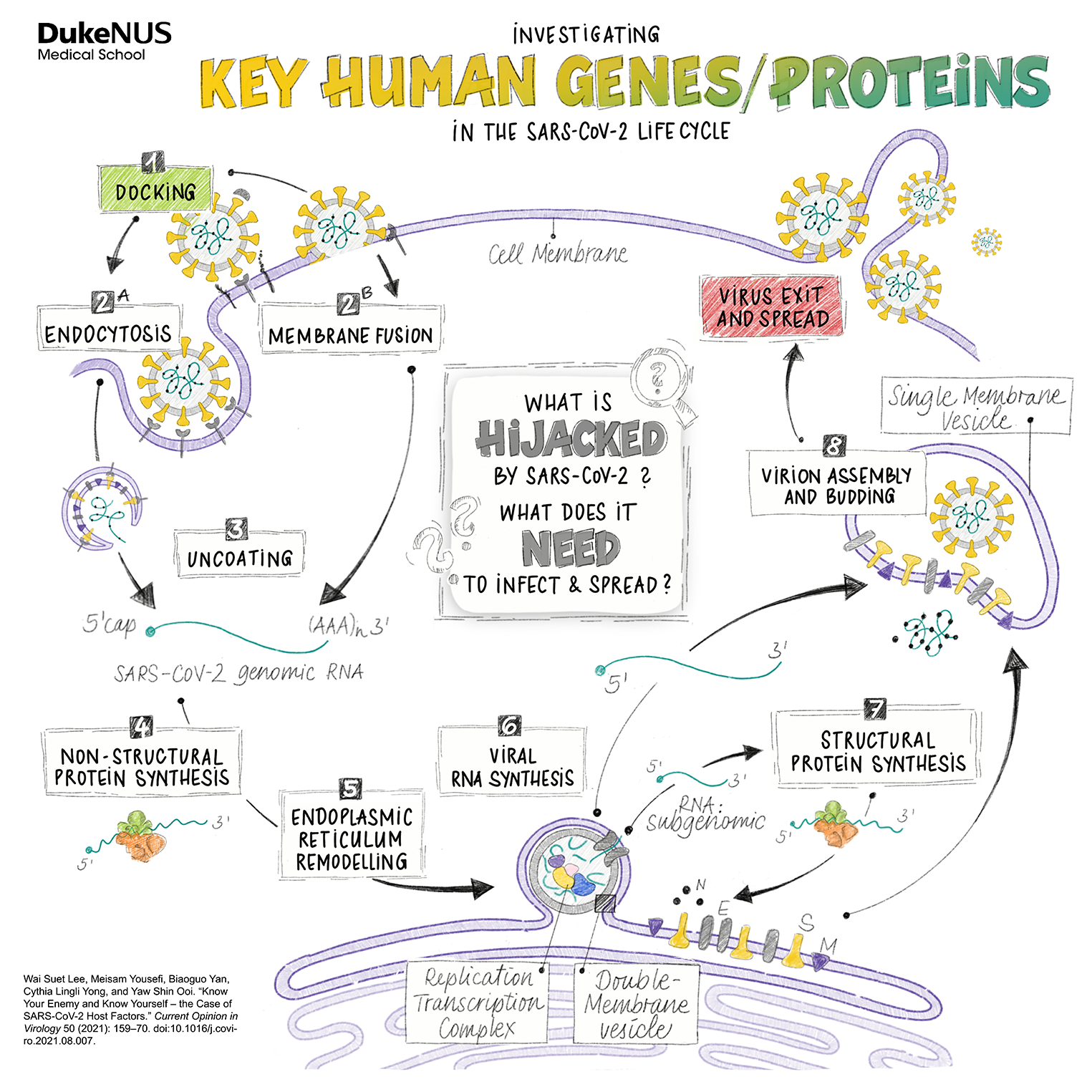By August 2021, the world was once again in the midst of a rapidly swelling wave of SARS-CoV-2 infections, with new information and insights continuing to come out at an exponential rate.
Taking a leaf from the ancient Chinese general Sun Tzu, researchers from Duke-NUS who specialise in studying the human response to viral infections decided to review all that was known about the intra-cellular goings-on in the human body leading as SARS-CoV-2 infects the cells. Their review article, published in Current Opinion in Virology, they hoped, would help consolidate what was known about the virus and spur the development of new vaccines and antiviral therapeutics.
The team, led by Assistant Professor Ooi Yaw Shin from Duke-NUS’ Emerging Infectious Diseases Programme, laid out the sequence of events in a SARS-CoV-2 infection cycle: SARS-CoV-2 infections begin when the virus’ spike protein locks onto receptors such as the angiotensin-converting enzyme 2 (ACE2) receptor on the surface of cells.
Two main entry routes, then, become available for SARS-CoV-2: the virus either fuses directly with the membrane coating the cell or it is taken into the cell after binding to certain receptors. Either way, success is achieved once the virus matures and fuses with the cell membrane.

OOI YAW SHIN STUDIES WHICH GENES ARE HIJACKED BY SARS-COV-2 AND WHAT THE VIRUS NEEDS TO INFECT A HUMAN CELL AND SPREAD TO OTHER CELLS
Once that happens, the virus unloads its RNA genome in the cell’s cytoplasm, where the viral RNA payload hijacks the cellular copying mechanism to generate viral proteins. Some of these proteins are assembled into new viruses, while others seize control of the machinery in the infected cell, forcing the cell to channel its resources into synthesising more viruses.
Accordingly, existing drugs that target pro-viral factors could potentially be repurposed, the researchers pointed out, to forestall SARS-CoV-2 infection. Such a repurposing could form the primary line of treatment for the COVID-19; with new drugs taking time to invent, trial and be approved for human use, the researchers noted.
They added that “selecting a suitable host target essential for a virus, but dispensable for a host remains challenging.”